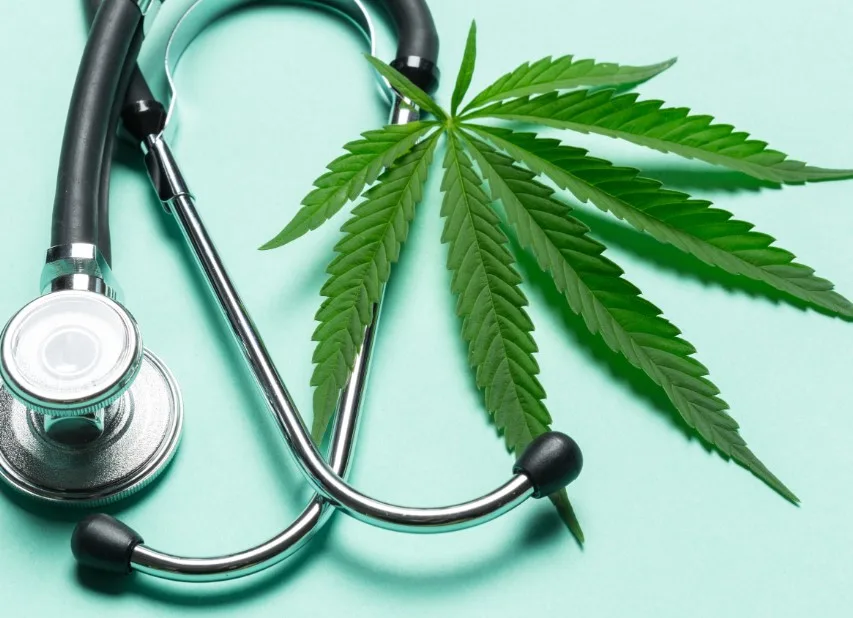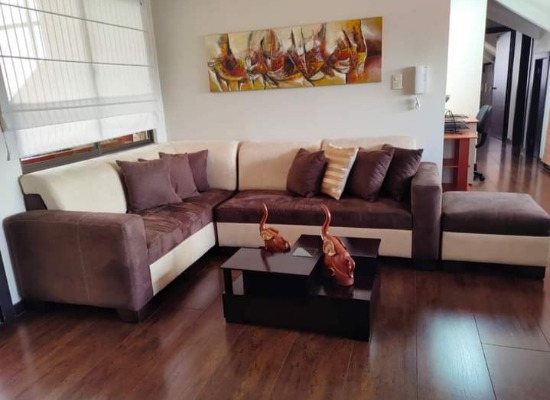Case studies of medical marijuana: Part 3
Author’s note: The is the third of a three-part series about medical marijuana.
By Garnett Stewart
Baby Charlotte (Figi)’s Colorado history is remarkable. Charlotte was diagnosed with infant severe myoclonic epilepsy over  10 years ago. At three, she had 300 Gran Mal seizures a day, which handicapped her mentally. She had many tube feedings and numerous medications, but the resulting seizures never lessened. Her care was continuous. This poor family had little to no family life. The parents were advised not to have further children since this rare epilepsy may be hereditary.
10 years ago. At three, she had 300 Gran Mal seizures a day, which handicapped her mentally. She had many tube feedings and numerous medications, but the resulting seizures never lessened. Her care was continuous. This poor family had little to no family life. The parents were advised not to have further children since this rare epilepsy may be hereditary.
A Colorado family of brothers mixed marijuana and hemp to make a CBD-rich, THC-low product. This was an experiment to test whether it could stop seizures. I envision witnessing the parents watch their sweet child suffer from uncontrollable seizures. Many Denver pediatric neurologists tried medicines and procedures without result.
The baby stopped seizing after being tube fed the new medical marijuana (MMJ). A quieted baby! Imagine.
 Many trials and errors determined her dosage. The results were outstanding. She lived 13 years, but after consuming MMJ, she thrived, becoming toilet-trained and growing at a rate that shocked her physicians. Developmentally, she was her chronological age at her death.
Many trials and errors determined her dosage. The results were outstanding. She lived 13 years, but after consuming MMJ, she thrived, becoming toilet-trained and growing at a rate that shocked her physicians. Developmentally, she was her chronological age at her death.
I received multiple calls about this case while working in Colorado. I had to research this myself because there were no protocols. Any revolution begins with education and bold changes. I was open to new ideas!
One of my best friends has severe rheumatoid and osteoarthritis. A former cheerleader, she was an athlete for decades. When she performed simple chores, like going to the grocery store, endured hours of agony afterward. She even had trouble walking around her home.
Her social life ended and her marriage did as well.
One day, my friend called to invite me to the Denver Botanical Gardens. To get a chair if needed, I double-checked wheelchair placements and the first aid station. How surprising was the moment when she did a ballerina position with her ankle on a railing? I gasped. I cried. We shared a miracle together. Then, we walked over two miles. I was always looking for first aid. This woman who couldn’t walk to the grocery and shop now does fan kicks like a NYC Rockette. Why?
Around 20 severe arthritis sufferers participated in Denver medicine study with marijuana’s top biological engineers. She ate raw plants in small cubes that looked like aloe vera. Heat activates THC. The plant doses contained solely MMJ and were non-psychoactive. My friend smoked MMJ for decades. But this raw plant material was amazing. Imagine my excitement and keen interest at this development!
I immediately visited the developers of her MMJ. They carefully let me meet biomedical engineers and visit the medicinal marijuana growing field. All met me before the offer and let me access the restricted zones since I was a biochemist, biophysicist, and N.P. Their engineers spliced several strains to create specialized strains as I watched. My friend participated in an arthritic drug study. Others were being tested for mental illness. Other participants utilized MMJ as a cancer therapy. Despite not having finished research, they all felt medicinal MMJ was transformative. Miraculous!
I saw a Colorado MMJ doctor and discussed quitting industrial medicine for a MMJ practice. He was the director of a mid-sized hospital for most of his internal medicine career. As an N.P., I quizzed several doctors. The plan was that I would be the intermediary for dosing. MMJ dosages and industrial medicines needed a partnership and, as an NP, I could do this. MMJ nursing associations brought me together with other professionals.
 I discussed my steep learning curve with a great Colorado friend. He was a former racecar driver. He has a titanium cage instead of many spinal vertebras after a near-fatal high speed racing accident. His abnormalities and problems were many. His pain was severe and constant. He worked minutes, not hours. I often held him as he wept since men tend not to cry with their families. This pillar of the racing world was a mass of pain and inabilities.
I discussed my steep learning curve with a great Colorado friend. He was a former racecar driver. He has a titanium cage instead of many spinal vertebras after a near-fatal high speed racing accident. His abnormalities and problems were many. His pain was severe and constant. He worked minutes, not hours. I often held him as he wept since men tend not to cry with their families. This pillar of the racing world was a mass of pain and inabilities.
For our mutual benefit, I saw his surgeon to relieve his serious pain and lack of function. The doctor declared, “If he uses MMJ, I will no longer treat him!” That discussion ended. Not to be totally dismissed, I suggested a trial of progressively lowering his addiction medicines and increasing MMJ to manage his pain. We met three times. His attending was a tough man to convince.
Because I was checking his vitals and carefully assessing his condition, that doctor reluctantly let him try. My racing expert transformed like my cheerleading friend. It was amazing how he reduced his opioid use, regained his sense of humor, and became charming again. Vitality returned. His family was stunned. He had sex for the first time in years! We all celebrated his homecoming! I remember we saved over three hundred dollars each month. His opioids were almost eliminated. His withdrawal occurred slowly as I was over seeing his care about every other day.
Well personally, I’m on this dangerous edge of a cliff. Decision: To become an MMJ N.P. and quit industrial medicine forever or continue as I was. I really love healing people and I have always been very good at it. But decades of no successes with chronic medical care made we want to jump off that preverbal cliff. I was seeing real healing and real success, and I wanted it so badly.
At that point, and as planned for years, I was leaving the U.S. forever. I was afraid that the FBI report would state my work in the USA Federal level as Illegal. That might have been damming. Although it was a really hard decision, I stayed in industrial medicine to acquire the FBI report securely! I also did not want to lose my “for eyes only” security clearance.
Industrial physicians have more tools in recent years. MMJ cannot be promoted or prescribed while practicing industrial medicine unless they recommend the FDA approved MMJ.
The FDA and medical board do not regulate nurses. Our board is stricter than the doctors’ board. Because we work under “doctors’ orders,” several industrial providers recruited nurses for medication dose reduction conversations about medical marijuana and industrial medicines. They were not NPs but educated nurses. Again, industrial doctors may lose their licenses for discussing unapproved medications. And no surprise, Big Pharma created a prescription version. Big Pharma and MMJ are huge businesses. Per a Google search: Through the end of 2022, states have reported a combined total of more than $15 billion in tax revenue from legal, adult-use cannabis sales. In 2022, legalization states generated more than $3.77 billion in cannabis tax revenue from adult-use sales.
Imagine going to the pharmacy and being informed your monthly MMJ cost was $27,000 with a $3000 copay (best guess). MMJ has only recently been accepted by medical doctors and pharmacies, but users must pay a high copay! I say HOLY COW!
I found two Medical Cannabis Schemes that studied industrial medicine and MMJ. The 2020 New Zealand publication has various grandfathering restrictions on new products.
Similar information is available from Australia Health. Both nations’ industries, providers, and customers benefit from them.
I advise self-education. Be your own advocate and trust your doctor, recognizing medical education constraints. He or she might not know about MMJ.
Despite the lack of prescription cannabis alternatives in the U.S., both New Zealand and Australia have MMJ in the national health departments. A political minefield in the US, MMJ use has moved away from regulation and toward information, utilization, and treatment in other nations.
According to Goodrx.com:
- Doctors in the U.S. may only prescribe FDA-approved cannabis medications, not medical cannabis store products. Federal law prohibits dispensary-supplied medical cannabis since it is not FDA-approved.
- Doctors can talk about cannabis products, not prescribe them. Although perceptions have changed in recent years, the US is still far behind the rest of the world.
According to Goodrx.com, medical cannabis can cure which conditions?
- Chronic pain
- MS
- Cancer
- IBS
- Epilepsy
- Chemotherapy-induced nausea and vomiting
As said, the FDA has not examined nor authorized therapeutic cannabis products. Luckily, we live in Ecuador and have vastly different laws.
_________________
 Permanent resident Garnett Stewart lives in Cuenca, Ecuador. She is a retired Adult Medicine Nurse Practitioner who specialized in Cardiology and Cardiovascular Surgery and wrote numerous publications. Her nursing degrees are both Bachelors and Masters. Biochemistry and biophysics were her undergraduate majors. Contact her at Ecuador.advice@gmail.com
Permanent resident Garnett Stewart lives in Cuenca, Ecuador. She is a retired Adult Medicine Nurse Practitioner who specialized in Cardiology and Cardiovascular Surgery and wrote numerous publications. Her nursing degrees are both Bachelors and Masters. Biochemistry and biophysics were her undergraduate majors. Contact her at Ecuador.advice@gmail.com





















